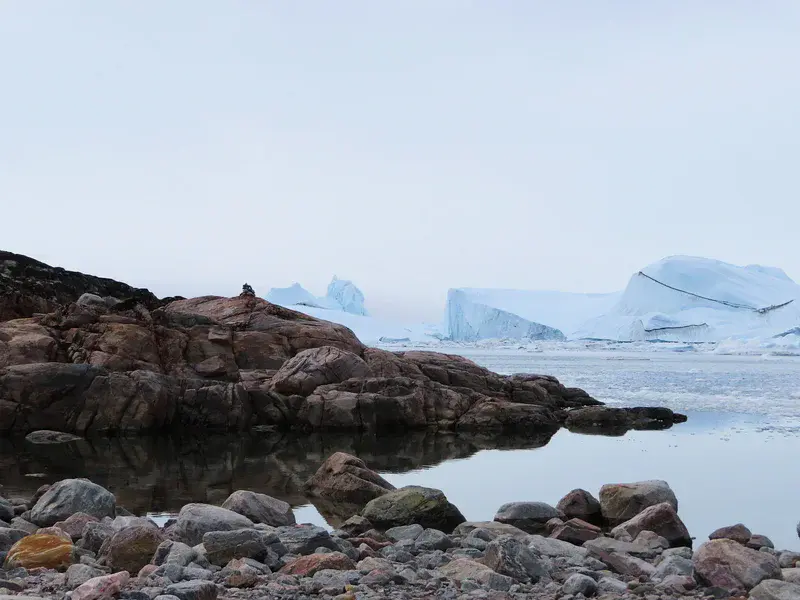
Reflections at Kuuniataaq II
by Fien De Doncker, Université de Lausanne
A soft wind breeze makes ripples in an otherwise silent soundscape. A careful listener can hear the trickling of melting ice joining the saline seawater. The sun seems in a never-ending doubt between rising or setting, casting large shadows even in the middle of the day, stretching and wrinkling my conceptions of time. Not only time is difficult to grasp here, but also distances, when the only available scaling objects are icebergs of all forms and shapes.
Dark lines in icebergs carry remnants of the biggest island in the world that is steadily torn apart by its icy cover; rounded rocks stand out as evidence of a wounded victim in a sea filled with ghosts of its robbers.
A while ago, maybe yesterday or maybe three summers ago, someone decided to build a cairn. It is not clear which way the cairn indicates, as there is no path beyond this point. By building the cairn with stones from the seabed, the remnants are returned to the rightful owner, the limbs are reunited with the bleeding body. So maybe the cairn does not indicate a way, maybe the cairn emerges as a sign of revolution: once-lost remnants proudly standing against a background of frozen, white thieves.
Categories
- Cryospheric Sciences (720)
- Field (2899)
- Geomorphology (1407)
- Hydrological Sciences (683)
- Ocean Sciences (338)
Location
- North America (769)
- Northern America (605)
- Greenland (70)
- Exact location (-51.0630 W, 69.1988 N)
Tags
Colours
Image properties
3840 × 2880 px;
image/png; 16.7 MB
Taken on 15
September
2020
Submitted on 31 March 2021
Licence
Creative Commons Attribution 3.0 Unported (CC BY 3.0)
Credit
Fien De Doncker (distributed via imaggeo.egu.eu)
Share
Appreciate
Report